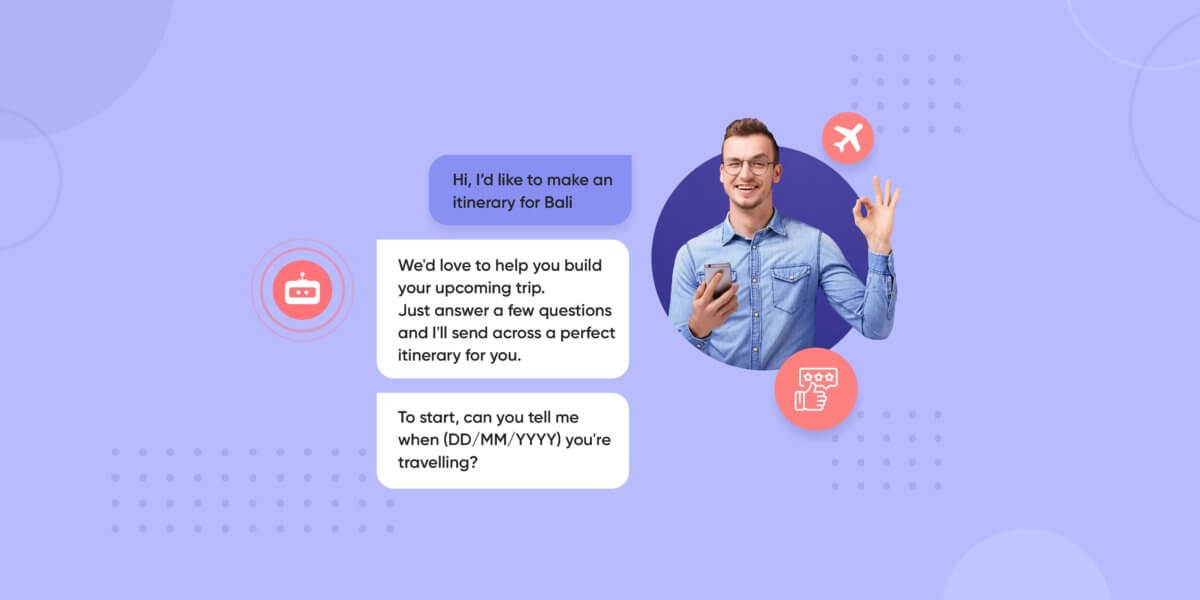Using Automation to Create a Seamless Client Experience

Using Automation to Create a Seamless Client Experience
Client experience matters, and it leads to real revenue. According to research from PwC, 43% of consumers would pay more for greater convenience. A further 63% of consumers agree that a positive experience with a brand is more powerful than great advertising — and automation can help.
Automation has long been heralded as a time-saver. By McKinsey’s estimate, CEOs spend an average of 20% of their time on things that could be automated with current technology. Those extra hours of the workday could be valuable elsewhere, but automation is more than just a sure-fire productivity machine.
It can streamline your processes at every stage of the client experience, from lead generation to customer acquisition to customer engagement and customer support. In fact, Gartner estimated that last year, up to 85% of customer service interactions would be automated.
So, how can you utilize automation to create a seamless client experience? First, you need to know where to implement the right tools. Here’s a look at where and how automation can help.
Automation For Lead Generation and Nurturing
Lead generation and lead nurturing go hand-in-hand. They’re the way your business can reel in actual conversions. Of course, as they say, you can lead a horse to water, but you can’t make it spend its hard-earned cash. Nonetheless, the more leads you have (and the higher the quality of those leads), the more conversions you’ll make.
Automation can help increase the number of leads by providing better, relevant and personalised messaging.
Some of the most effective lead nurturing campaigns focus on cart abandonment — and there are a ton of reasons people abandon their cart. Overall, surveys show that between 55% to 80% of people will abandon their cart before completing a purchase, but automation can help reel consumers back in.
Dynamic product ads are an effective part of the average cart abandonment campaign, but there are other ways to automate this part of the sales funnel. This includes chatbots, automated cart abandonment emails, and automated cart abandonment SMS messages, all of which can be sent to help sway consumers about products they’ve already shown an interest in.
As it stands, cart abandoners are already high-quality leads. They’re willing to interact with your brand, and these types of automated messages (when used sparingly and in an unobtrusive way) can improve their shopping experience.
Automation For Customer Service
Customer service is a crucial part of a sales funnel. You can’t build brand loyalty unless you support your clients throughout the entire process. That includes answering any questions they might have before purchasing and fixing any problems they might have afterwards.
Automating customer service vastly improves the customer experience by giving consumers immediate answers and swiftly resolving issues around the clock. Unlike humans, who have a typical 9 to 5 workday, a customer service chatbot doesn’t need to sleep. It can answer clients regardless of the time of day, and no one gets heated about waiting endlessly on hold.
The truth is that people don’t want to be bothered with a human (though the option of live chat should still be available in the rare case a chatbot doesn’t suffice).
According to an AMEX survey, 35% of consumers actually prefer to connect with customer service in a chat. Furthermore, one study showed that 83% of consumers admitted they’d be more loyal to a brand that allows them to handle customer service inquiries and booking appointments or reservations through a chatbot.
Simply put, it makes a typically annoying part of the customer experience a lot easier.
Automation For Customer Engagement
At the end of the day, automation can help streamline customer engagement across the board, regardless of a client’s stage in the sales funnel.
While this includes personalised and automated marketing emails and other marketing automation software, chatbots are an increasingly important part of the picture.
Chatbot usage more than doubled between 2019 and 2020, with consumers using them to help with everything from purchases and product information to booking appointments and sending reminder notifications.
Whatever the method, automation works to improve the customer experience in two ways. First, it works directly to optimise processes and deliver immediate answers. Second, it works indirectly to save your team time to focus on the core needs of the business. The less your team has to do on the customer side, the more time they’ll have to create a better product and better buying experience all around.







